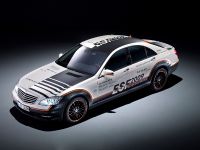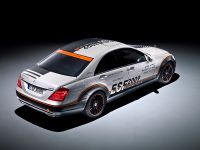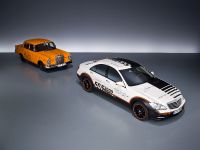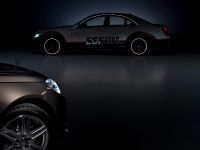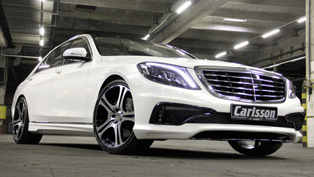The ESF 2009 Experimental Safety Vehicle
The ESF 2009 is the first Experimental Safety Vehicle Mercedes-Benz has built since 1974. Like its historic predecessors, it attractively combines trailblazing innovations in the field of safety and makes the progress achieved visible. Integrating all the ideas and implementing them for a clear appreciation was an extraordinary challenge for the team in the test vehicle workshops.
The go-ahead for the ESF was given in October 2008, and the decision was received with great enthusiasm in the test workshop: "Making safety visible – I was quickly able to assemble a highly qualified team for this interesting project", says Axel Wittig, the team leader for the entire workshop facility. "The complexity of this assignment was a welcome challenge, as we not only had to integrate the numerous innovations into an S 400 HYBRID, but also make them fully functioning in demonstration mode and provide a look behind the technical scenes by incorporating eight inspection windows in the bonnet, bumpers and doors."
The core workshop team for the ESF 2009, headed by coordinator and facilitator Hans Peter Hiller, consisted of three model-builders and two electricians. The team was supported by Jürgen Arnold, who took care of the electrical engineering, and designer Matthias Rissmann, who e.g. prepared the body apertures for the inspection windows. It was only possible to keep to the ambitious time-plan because countless internal (from the upholstery specialists in Design to production engineering) and external suppliers gave rapid and unbureaucratic assistance. "The great enthusiasm for the core Mercedes expertise of safety could be felt at all times", project manager Michael Fehring remembers: "The 'Daimler spirit' ensured rapid decisions without time-consuming consultation processes." Sheer fascination for technology also played an important part. The chance to take a look into a radar sensor, which is normally only supplied as a 'black box' but was in this case integrated into the front bumper in a cutaway state, attracted many an engineer who was not involved in the project into the workshop bay for the ESF 2009.
The complexity of this project, which involved the integration of 13 safety innovations into the hybrid version of the S-Class that only existed as a prototype when the work started, is already shown by the fact that a completely new wiring harness had to be designed and produced. At the heart of the demonstration technology is a divided compressed air tank in the boot, with a compressor and external power supply, which provides the airbags and the air chambers for PRE-SAFE Pulse and Interseat Protection with air. The finishing touch for the ESF 2009 is a central remote control system for all the functioning demonstrations.
The result of all this work was two experimental vehicles in the special ESF paint finish, which includes black-painted chrome trim and reflective strips on the door seals and tyres: the actual ESF 2009 and its externally identical brother, which can be used for driving and photographic purposes.
